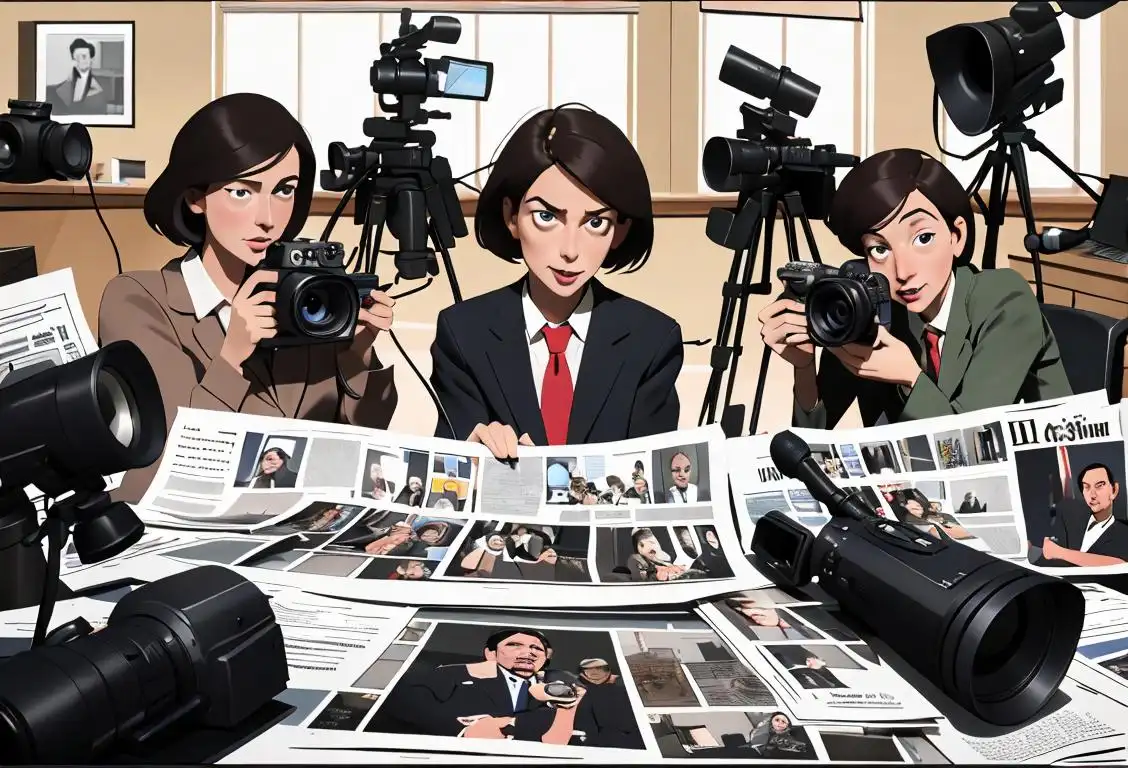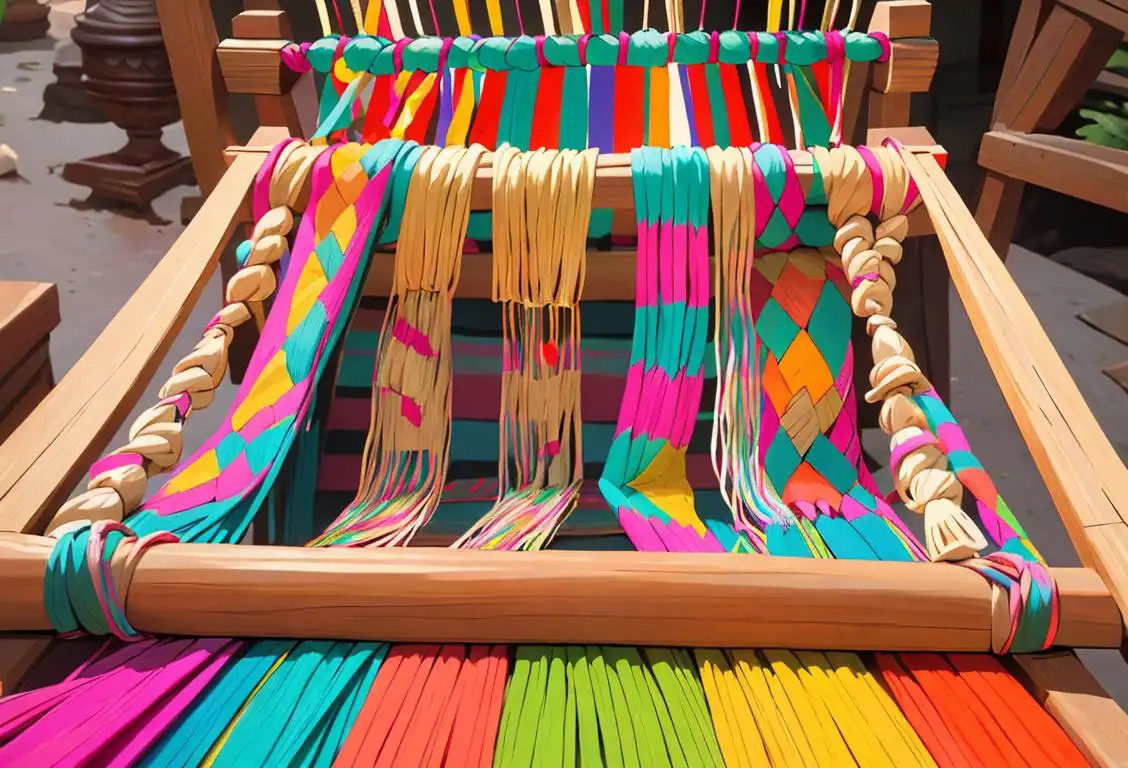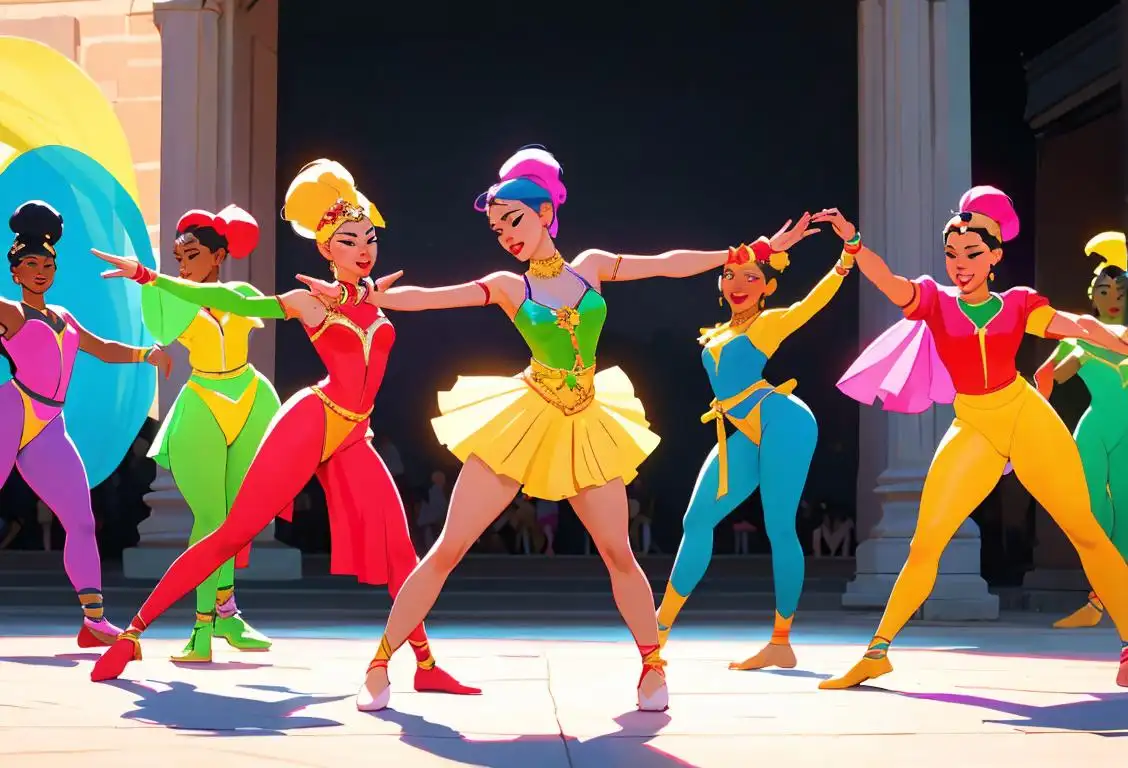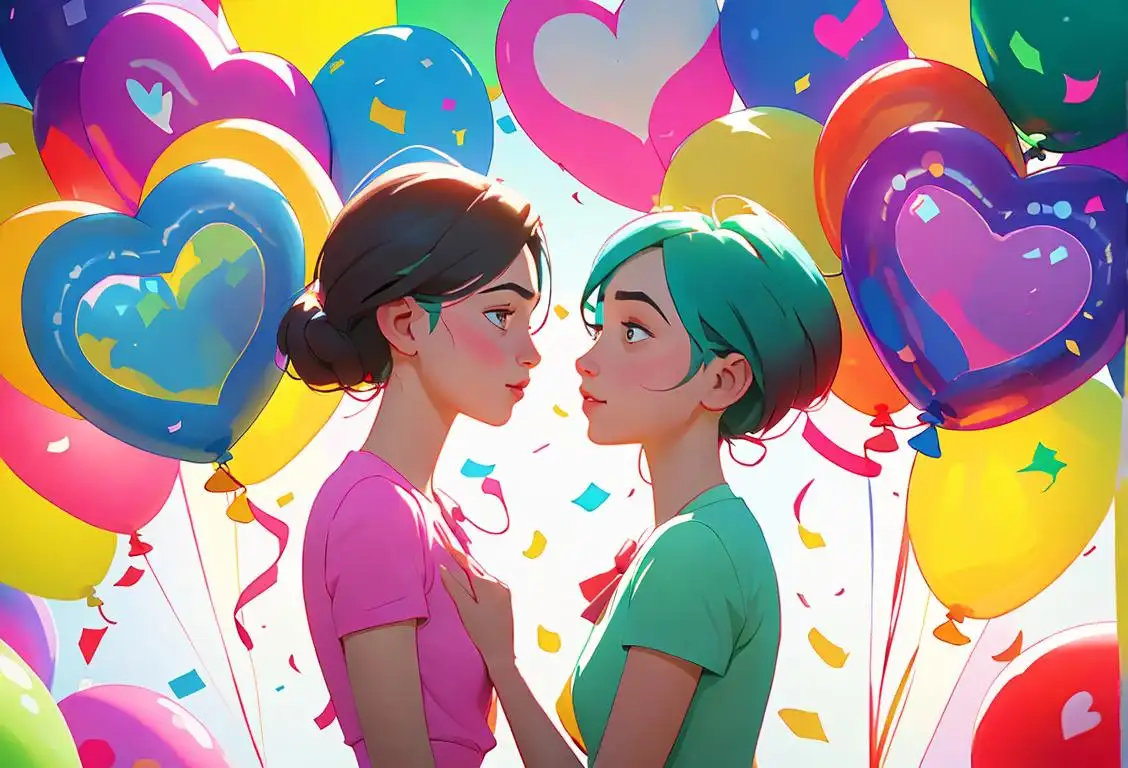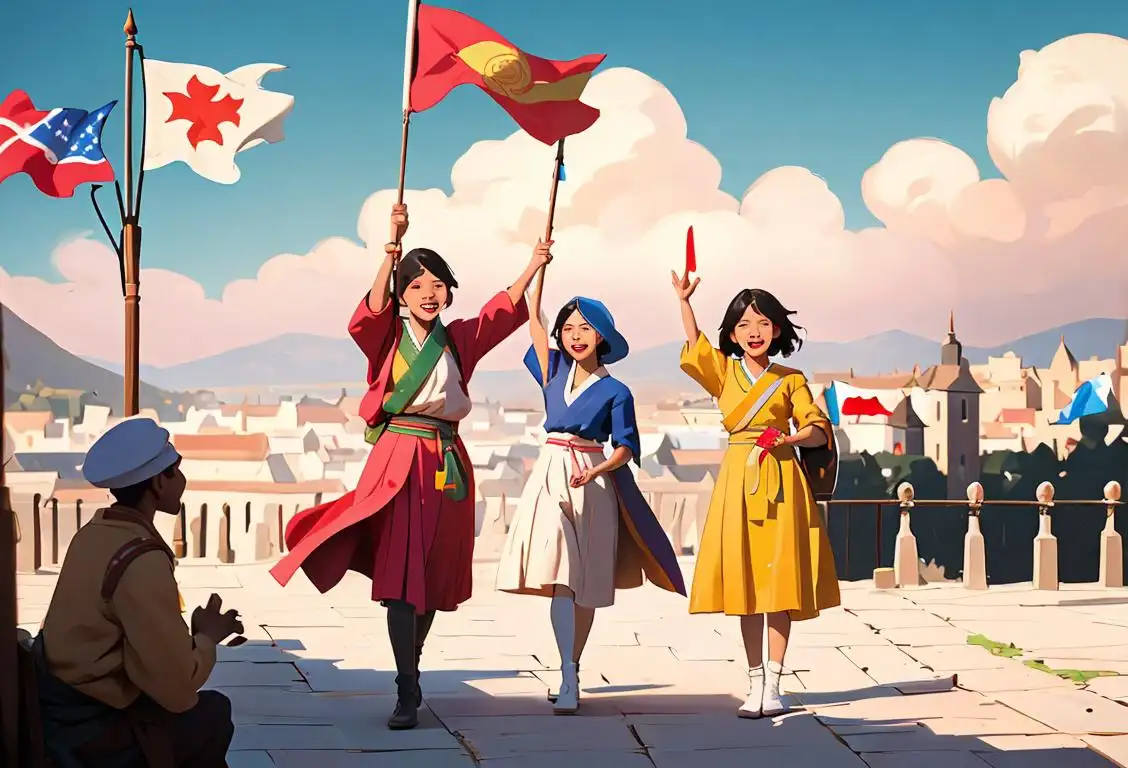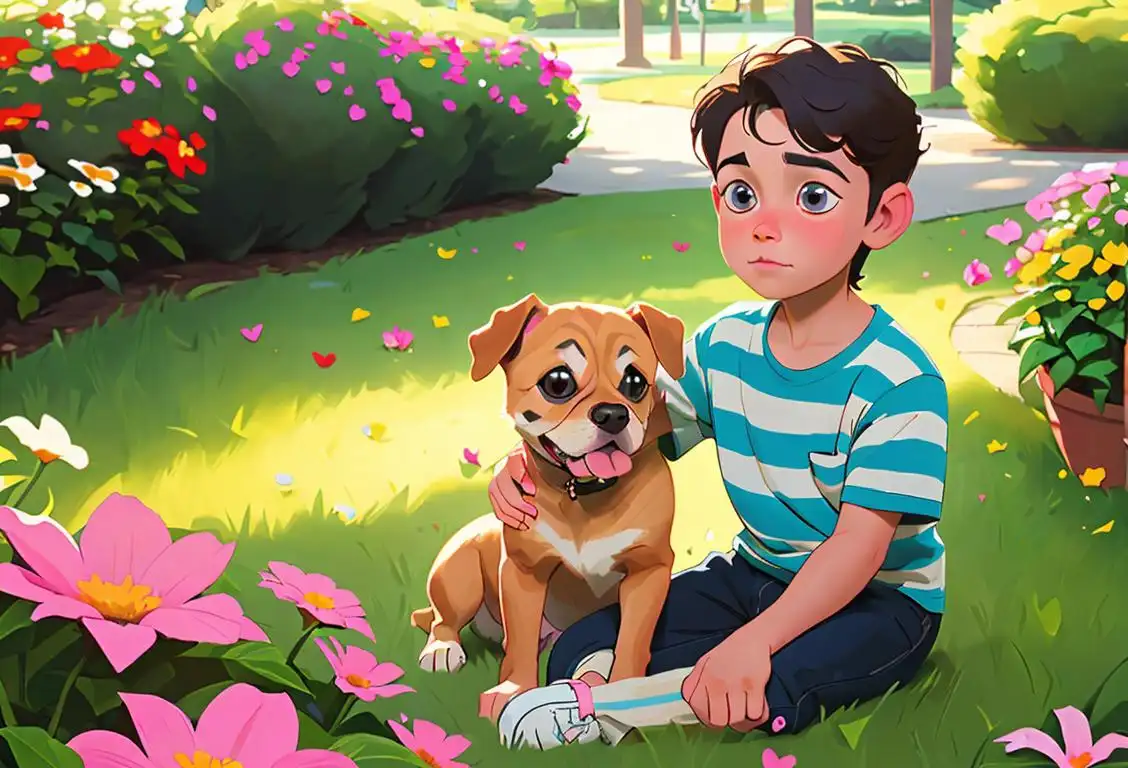National Colour Day
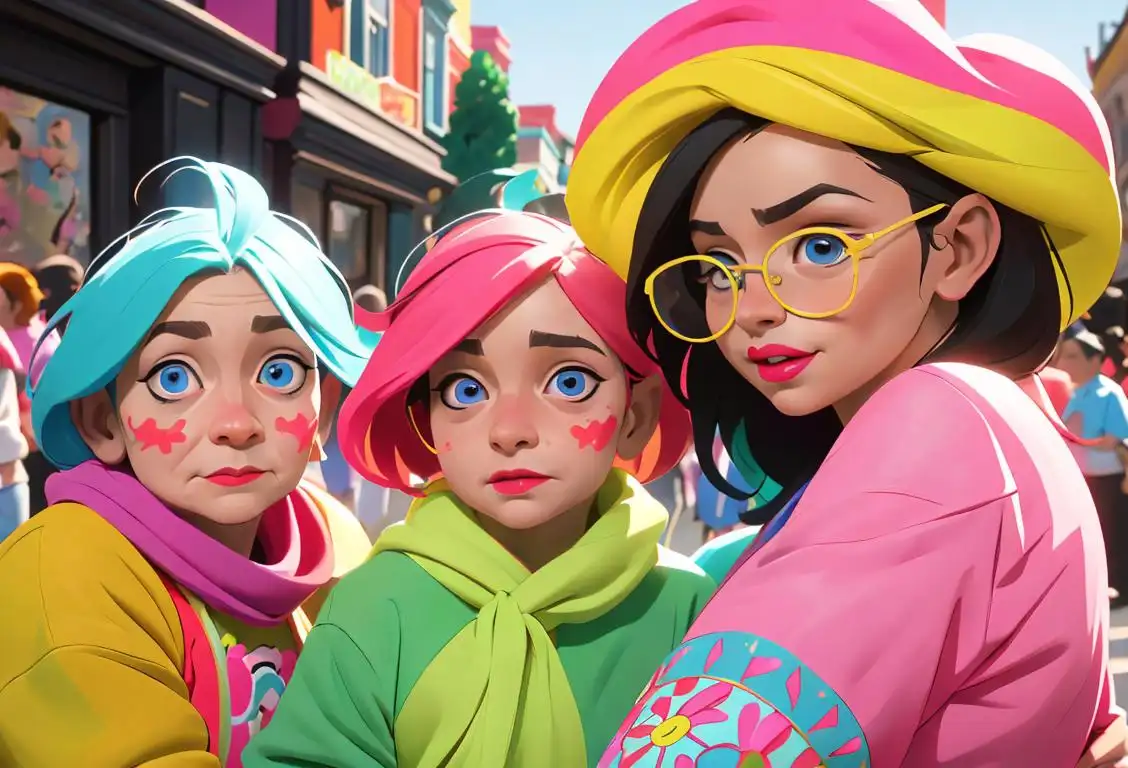
Welcome to the colorful world of National Colour Day! Prepare to be dazzled by the vibrant hues and playful pigments that adorn this special day. Whether you're a lover of bold shades or prefer the subtle beauty of pastels, this day is all about celebrating the many colors that make our world a little brighter.
When is Colour Day?
It's national colour day on the 22nd October.
The Kaleidoscope of National Colour Day
Every year on National Colour Day, people across the nation come together to embrace the kaleidoscope of colors that surround us. From the vivid rainbow after a storm to the delicate flowers in a spring garden, colors have a way of brightening our lives and igniting our imaginations.
This delightful day has its roots in the enchanting world of the internet. Back in October 2016, the online community began buzzing with mentions of National Colour Day. With 56 mentions detected, the internet was teeming with excitement for this celebration of all things colorful.
So, how do you participate in this vibrant extravaganza? It's simple! Just let your imagination run wild and surround yourself with your favorite colors. Spend the day painting, drawing, or simply appreciating the beauty of the world around you. Experiment with different color combinations, wear your brightest outfit, or indulge in some deliciously colorful treats.
This day is also a fantastic opportunity to learn more about the psychology of color. Did you know that different colors can evoke different emotions and have a profound impact on our moods? For example, yellow is often associated with happiness and optimism, while blue is known for its calming effect. So, dive into the fascinating world of color theory and discover the secrets behind the shades that speak to your soul.
The Hidden Meaning Behind Colors
Did you know that colors have hidden meanings and symbolisms? Here's a fun fact to tickle your curiosity: the color red is often associated with love and passion. That's why we often gift red roses on Valentine's Day to express our deepest affections. So, the next time you notice a burst of color, take a moment to ponder its significance and the emotions it stirs within you.
History behind the term 'Colour'
14th Century
Introduction of the term 'colour'
The term 'colour' finds its origins in the 14th century when it came into English from the Old French word 'colur'. In Middle English, the word initially referred to the appearance, hue, or tint of something. It was commonly used to describe the attributes of light and how it interacted with objects.
1940 BCE
Ancient Origins
The term 'colour' finds its earliest known origins in ancient Egypt, where vibrant and diverse pigments were used in wall paintings, pottery, and textiles. Egyptians extracted colorants from natural sources such as minerals, plants, and animals, creating a rich palette to chronicle their culture and beliefs.
1300s
The Origin of the Term
The term 'colour' has its roots in the Old French word 'colour' and the Latin word 'color'. These words were used to describe the visual sensation resulting from the reflection or absorption of light. In the 1300s, the word 'colour' became commonly used in English, evolving from the Old French and Latin origins.
14th century
The Emergence of 'Colour'
The term 'colour' first appeared in the English language in the 14th century, derived from the Old French word 'colour', which itself came from the Latin word 'color'. During this time, the word 'colour' referred to the visual perception of different wavelengths of light. It was used to describe the various shades, tints, and hues that could be seen by the human eye.
16th Century
Expansion of the term 'colour'
By the 16th century, the term 'colour' evolved to encompass a broader range of meanings. It not only referred to the visual aspect of light and pigments but also started to symbolize emotions, moods, and the varied expressions of human experiences. This expansion of the term highlighted the significance of color in art, fashion, and cultural symbolism.
15th century
Symbolism and Cultural Significance
In the 15th century, the concept of colour started to hold symbolic and cultural significance. Artists and scholars began associating specific colors with certain emotions, ideas, and cultural meanings. For example, red was often linked to passion and power, while blue conveyed tranquility. The growing recognition of color's significance in various contexts laid the foundation for its broader understanding and exploration.
1666
Isaac Newton's Discoveries
In 1666, the English scientist Sir Isaac Newton conducted a series of experiments with light. He discovered that white light is actually a combination of all the colors of the rainbow. Newton passed white light through a prism, observing how it split into a spectrum of separate colors. This groundbreaking discovery laid the foundation for our understanding of the colors that make up visible light.
700 CE
Emergence in Medieval Europe
During the medieval period, the term 'colour' gained prominence in Europe. The concept of color symbolism became prevalent, with various hues representing social status, religious attributes, and cultural associations. Manuscripts, stained glass windows, and tapestries showcased the application of color to depict narratives.
17th Century
Scientific study of color begins
During the 17th century, the scientific study of color gained momentum. Renowned scientists such as Isaac Newton delved into the properties of light and its interaction with various objects. Newton's experiments with prisms and the discovery of the color spectrum laid the foundation for color theory and our understanding of how colors are perceived and combined.
1724
Colorimetry and Color Spaces
In 1724, the French chemist Pierre Bouguer introduced the concept of colorimetry, which involved the quantitative measurement of color. Bouguer's work paved the way for the development of color spaces, such as the CIE XYZ color space, which allow us to represent and define colors mathematically. These systems play a crucial role in various fields, including printing, photography, and digital imaging.
17th century
Scientific Studies on Color
The 17th century witnessed a significant advancement in scientific understanding of color. English scientist Sir Isaac Newton conducted experiments with prisms and discovered that white light could be separated into a spectrum of colors. His findings contributed to the development of color theories and the understanding of light and color as a physical phenomenon. This marked a crucial step in the scientific exploration of color.
1666
Discovering the Visible Spectrum
In the year 1666, Sir Isaac Newton conducted an experiment with sunlight passing through a prism, revealing a spectrum of colors. This groundbreaking discovery led to the understanding of visible light's composition and laid the foundation for the development of color theory and the scientific study of color.
19th century
Color in Industrial Revolution
With the advent of the Industrial Revolution in the 19th century, the production and availability of vibrant dyes and pigments increased dramatically. This led to a broader use of color in various industries, including textiles, art, and fashion. The ability to create and reproduce vibrant colors became more accessible to the general population, causing a transformation in visual aesthetics and cultural expression.
19th Century
Color theories and pigments
In the 19th century, significant advancements were made in color theory and the development of pigments. Artists and scientists explored the physiological and psychological effects of different colors, leading to the establishment of color systems and harmonies. Additionally, the Industrial Revolution brought about the production of synthetic pigments, expanding the range of available colors for artistic and industrial purposes.
1856
Color Photography
The term 'colour' underwent a transformation in 1856 with the advent of color photography. The first successful color photograph, known as the 'Hillotype,' was produced by Scottish scientist James Clerk Maxwell. This breakthrough revolutionized artistic expression, preservation of historical moments, and opened up new avenues in visual communication.
1857
Color Theory and Art
In 1857, the Scottish painter and theorist David Ramsay Hay published 'The Laws of Harmonious Colouring', a seminal work in color theory. Hay explored the psychological and emotional impact of colors, providing insights into the principles of color harmony and contrast. His theories greatly influenced the practices of artists and designers, contributing to the development of color symbolism and aesthetics.
20th century
Color Psychology and Modern Art
In the 20th century, color psychology emerged as a field of study, examining the influence of colors on human emotions and behavior. Artists like Wassily Kandinsky and Piet Mondrian explored abstract art and its relationship to color, pushing the boundaries of traditional color usage. The development of modernism and subsequent art movements further expanded the understanding and significance of color, challenging traditional norms and opening new avenues of expression.
20th Century
Color in media and technology
The 20th century witnessed the extensive utilization of color in various media and technologies. Color photography, color film, and color television revolutionized visual communication. The advent of new printing techniques enabled the mass production of colorful advertisements and magazines, shaping the visual culture of the time. The impact of color in branding, advertising, and design became undeniable, influencing consumer behavior and creating powerful visual identities.
1903
The Color Printing Revolution
The introduction of the first commercial color printing press by the German firm, Dyestuffs, initiated a printing revolution in 1903. This development allowed for the mass production of color prints, vibrant illustrations, and an explosion of colorful advertisements, magazines, and books.
1903
Color Film Innovations
In 1903, the Lumière brothers, pioneers of cinema, patented the first practical color photography process, known as the Autochrome Lumière. It involved a specialized screen of tiny colored potato starch grains that acted as filters, allowing the recording of color images on photographic plates. This innovation marked a significant milestone in the history of color reproduction, shaping the future of filmmaking and photography.
1969
Digital Color Displays
With the invention of the Cathode Ray Tube (CRT), digital color displays became accessible to a wider audience. The display technology developed by RCA in 1969 marked a significant milestone in color representation, revolutionizing television, computer monitors, and ultimately shaping the way we consume visual media.
1931
CIE XYZ Color Space and RGB
In 1931, the Commission Internationale de l’Eclairage (CIE) established the XYZ color space as a standard for human color perception. This system formed the basis of modern color models like RGB (Red, Green, Blue). RGB, widely used in electronic displays and digital imaging, allows for the accurate representation and reproduction of colors by combining different intensities of red, green, and blue light.
1963
Color Television Becomes Commonplace
Color television made its commercial debut in the United States in the early 1950s, but it took until the 1960s for it to become more widely adopted and mainstream. The introduction of color television revolutionized the entertainment industry, allowing viewers to experience a more vibrant and immersive visual experience. Today, color displays are ubiquitous in homes, cinemas, and digital devices, enriching our lives with a plethora of colors.
1990
Web-safe Color Palette
As the internet gained popularity, the term 'colour' took on new meaning with the emergence of web design. In 1990, the web-safe color palette was established, consisting of 216 colors that could be reliably reproduced across different computer systems. This standardized palette ensured consistent color representation for online content.
Present Day
Color in Modern Culture
In the present day, color plays a crucial role in various aspects of our lives. It is not only an essential element of art, design, and fashion but also influences our emotions, perceptions, and communication. Colors are used strategically in marketing and branding to evoke specific feelings and associations. Additionally, color symbolism and cultural meanings vary across different societies, further highlighting the multifaceted impact of color in our modern culture.
Present
Color in Modern Culture
Today, the term 'colour' has become an integral part of our daily lives, evoking emotions, influencing branding strategies, and shaping our perception of the world. From the impact of color psychology in marketing to the diverse representations in art and fashion, color continues to hold immense cultural significance.
Did you know?
Did you know that colors have hidden meanings and symbolisms?Tagged
awareness funFirst identified
22nd October 2015Most mentioned on
22nd October 2016Total mentions
56Other days
Nurses Day
Former Prisoner Of War Recognition Day
Press Day
Handloom Day
Heroes Day
Memorial Day
Dance Day
Bestfriends Day
Liberation Day
Love Your Pet Day


